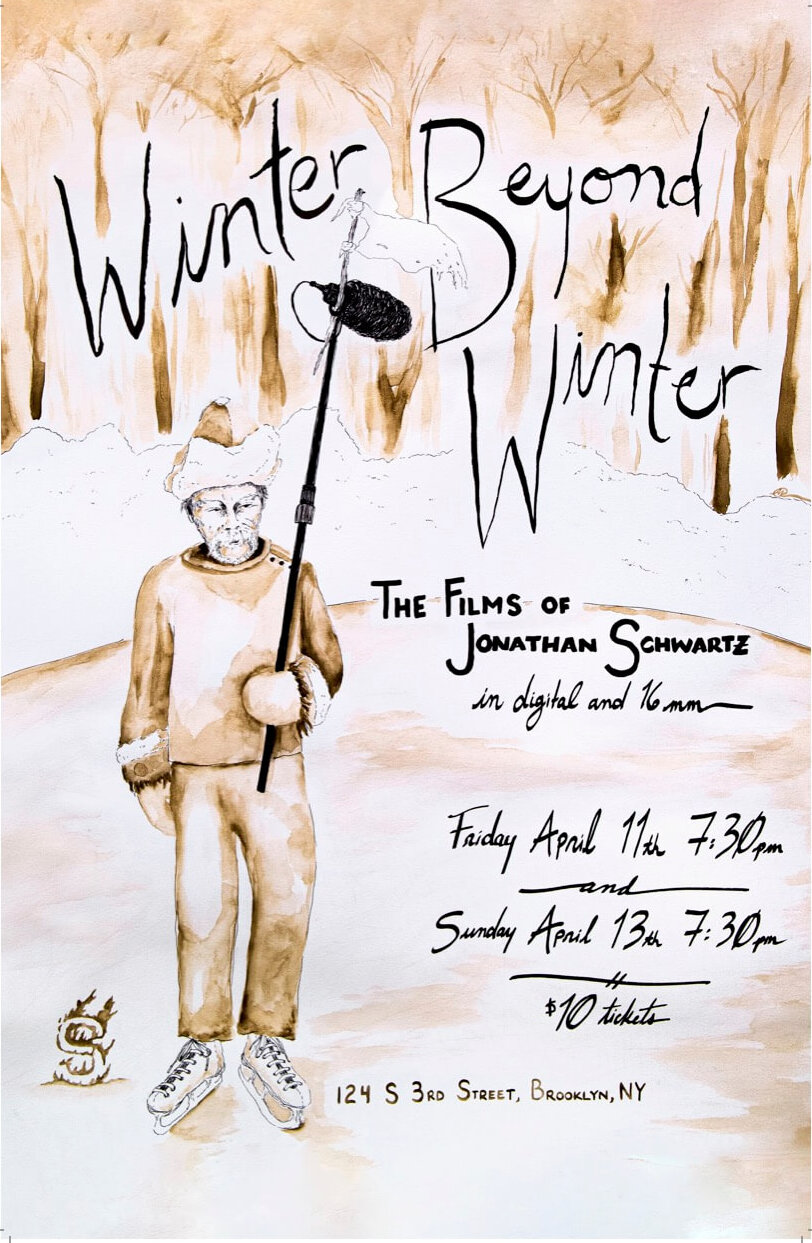Category: Uncategorized
KERSTI JAN WERDAL: WORK 2017-25

In the spirit of previous collaborations with filmmakers like Lev and Whitney, Nuotama Bodomo and James Edmonds, Spectacle invites Seattle-born filmmaker KERSTI JAN WERDAL to join us for two nights this April. The first program on April 18th is a presentation of short-to-medium-length works spanning the last ten years, culminating in the New York City premiere of her latest short, TEST PIECE; the second, on April 19 is the New York City premiere of Werdal’s feature debut LAKE FOREST PARK.
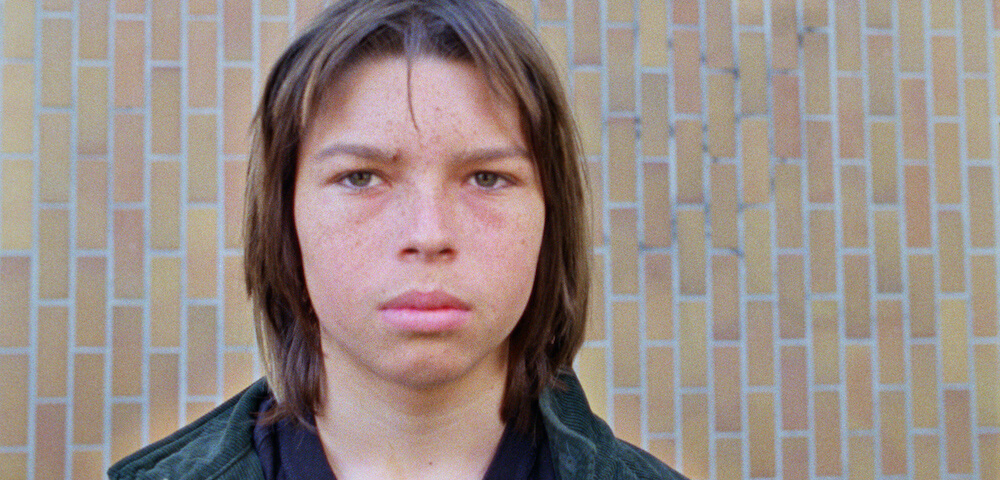
WORK 2017-25
dir. Kersti Jan Werdal, 2017-2025
80 min. In English.
United States.
FRIDAY, APRIL 18 – 7:30 PM followed by a discussion with Kersti Jan Werdal moderated by film curator Inney Prakash
ONE NIGHT ONLY!
This program of selected short films demonstrates the evolution over the past decade of Kersti Jan Werdal’s mastery of film form, her eye for composition, her historical fascinations and the interdisciplinary nature of her overall approach to cinema. WORK 2017-2025 spans documentary, reenactment, essay and dance films, culminating in the juxtaposition of 2017’s CEDAR ROSE (which forms a perfect complement with Werdal’s haunting debut feature LAKE FOREST PARK due to its use of archival material and its Pacific Northwestern locale) and her latest film TEST PIECE.
“Spending hours and hours over large stretches of time with objects, ephemera, photographs, and artworks which encompass a person’s life, I began to consider the concept of an archive, and how the elusive slippery elements of memory can be imposed upon materials and live on once the person has passed. As the archive takes shape, what’s required is a person or institution making a choice of what is kept or discarded, reflecting and informing a history which can be accurate to that history or not. I feel this is similarly tied to field-work, and the role of the anthropologist, which is impossibly problematic. Things are left out, often one or just a handful of viewpoints are reflected, and what’s left is something which many present as objective, which is in truth, inherently subjective. I feel this is also why I tend to avoid the term documentary, I’m not sure it exists, or rather – if the term holds the same meaning that it used to. I’m always considering this when making and think it’s partially why archival materials wind up in my work.” – Kersti Jan Werdal, interview with the Grand Cinema
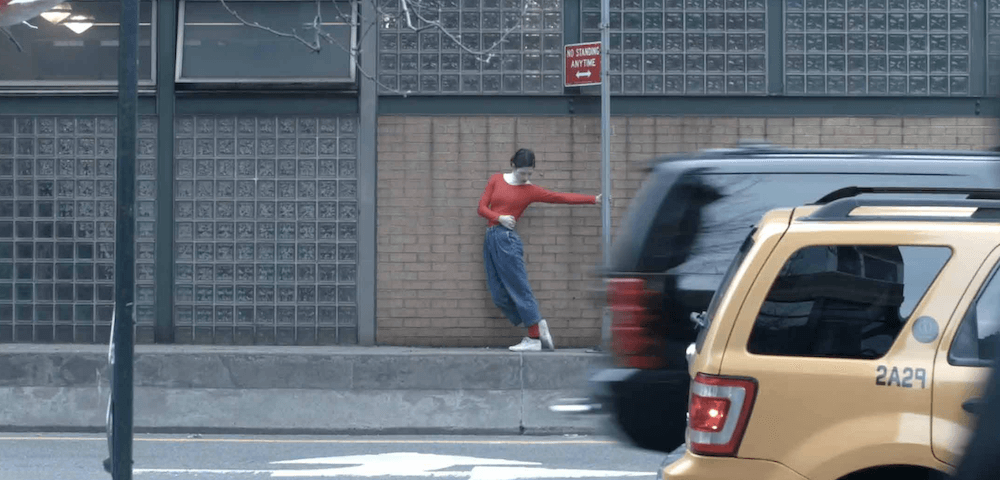
SLOW SHAPES
2017. 12 min.
Shot in Manhattan, Brittany Bailey uses sidewalks and roadside monuments as a proxy for a stage, or dance studio. Her body creates improvised shapes utilizing the negative space between limbs, concrete, vehicles, and locals walking to where they are going.
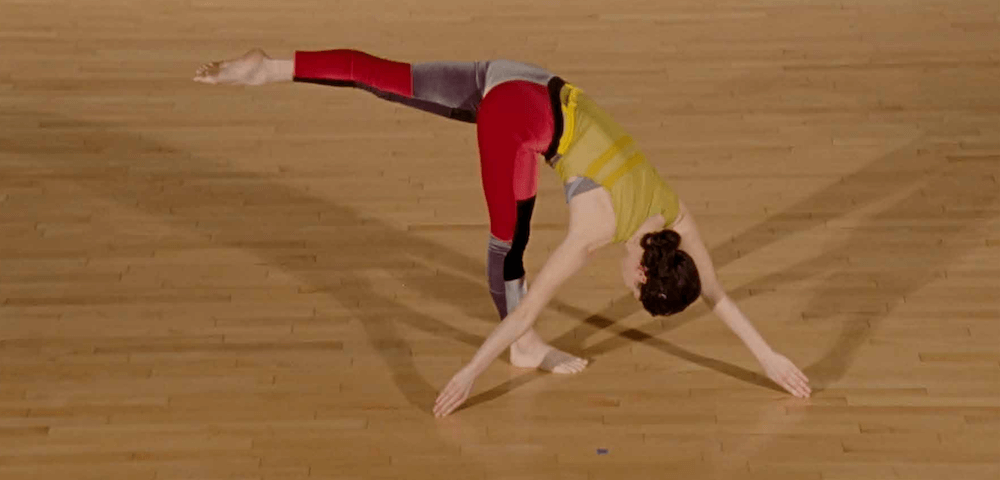
PROMENADE
2018. 15 min.
PROMENADE is an observational portrait of dancer-choreographer Brittany Bailey, as she prepares to debut a new work at Judson Memorial Church. The film engages with archival possibility, while interrogating if or how performance, a live time based medium, may be represented in the memory of moving image.
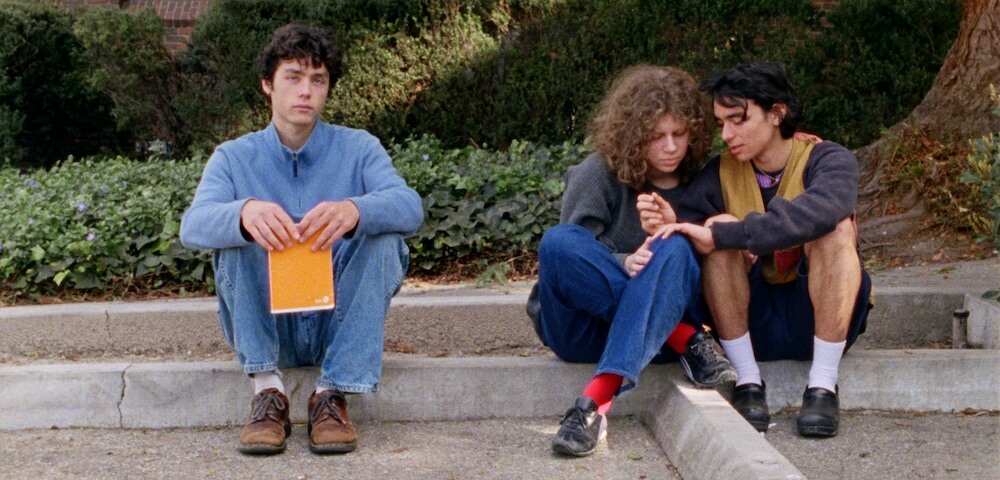
I CANNOT NOW RECALL
2023. 15 min.
In I CANNOT NOW RECALL, Kersti Jan Werdal guides the viewer through a selection of Yvonne Rainer’s dreams, chosen by the filmmaker from a collection of Rainer’s journals archived at The Getty Museum. Constellated first through Werdal’s selections, and then refracted through the readings of a street-cast filmed in LA High Memorial Park, Rainer’s dreams appear as nodes on an anxious psychic ecosystem. As the material distills from private reflection into script into performance, what emerges is a vital interchange between desire and disquiet. References to the medium of film seem to further entangle the relationship between filmmaker and subject, as well as the relationship between film and viewer. Joined by doubles and guides, in unfinished buildings and the depths of outer space, the dreamer explores her subconscious with a probing appetite for expansion and wholeness – but who the dreamer is exactly remains an open question.

CEDAR ROSE
2017. 8 min.
“In CEDAR ROSE, Werdal’s approach provides a productive space in which a forgotten language and archive is presented as it is, without being explained or argued. Werdal allows for this dark margin of the archive, as Trond Ludemo describes it, this gap, in her bold decision of only having archival footage of the seemingly mundane language course coupled with her observational shots of the land the tribe was erased from, bearing the weight of landscape and the consequences and effects of accelerated technology and capitalism. However, Werdal does not explain this approach, and so there is a respect to the culture as it is and was through the opacity Werdal allows it in her film.” – Lucy Kerr
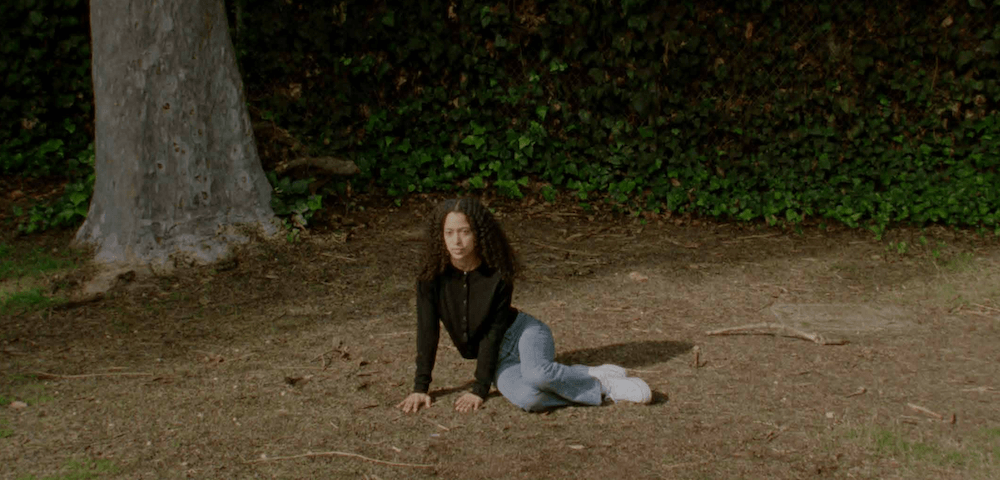
TEST PIECE
2025. 19 min.
Kersti Jan Werdal’s TEST PIECE dismantles cinematic conventions through a disjunctive, non-narrative layering of images, sounds, and text. From an archer in a natural landscape to a theatrical dark void where sounds are described rather than heard, and finally to a diverse collection of source texts narrated in a park, TEST PIECE constructs a dynamic and evolving cinematic space that invites viewers to critically engage with the film’s conceptual and intellectual potential.
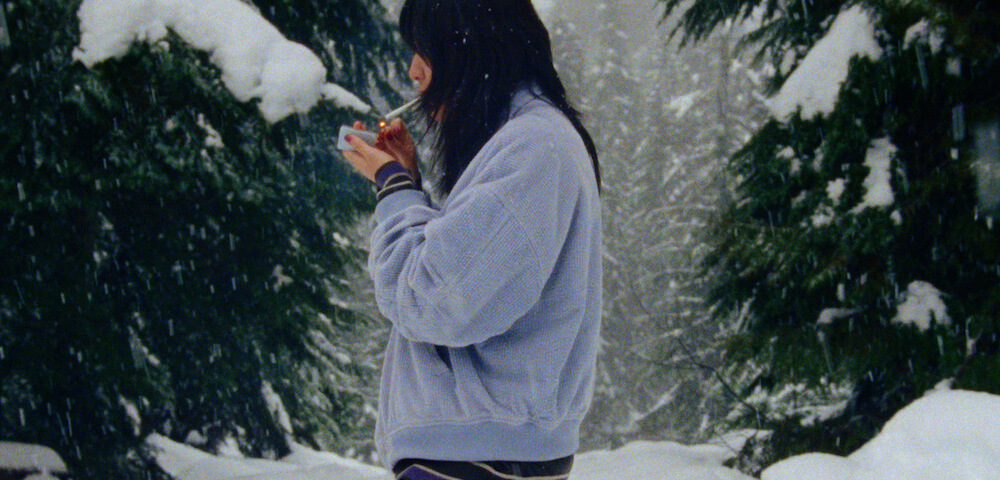
LAKE FOREST PARK
dir. Kersti Jan Werdal, 2021
60 mins. United States.
In English.
SATURDAY, APRIL 19 – 5 PM followed by a discussion with Kersti Jan Werdal moderated by filmmaker Lucy Kerr
ONE NIGHT ONLY!
Kersti Jan Werdal’s official synopsis for LAKE FOREST PARK is deceptively simple, calling it “a coming-of-age story about a group of friends dealing with the secret of a classmate’s death.”
Understated and enigmatic, LAKE FOREST PARK accepts the mystery of everyday life in its fragmented and observational approach. The film’s empty spaces, damp greenery and austere beauty perfectly capture the environment of the film’s Washington state locale, to say nothing of the real-life Lake Forest Park – a suburb just north of Seattle (and, crucially, the filmmaker’s hometown.)
LAKE FOREST PARK is set in the early 21st century; Werdal told an interviewer she was drawn to the era’s lack of social media, and the fact that “Escape and connection had to be accessed through other modes.” But only the closest of watchers will register that context, as Werdal’s bigger project suffuses the eternal ups and downs of the classic American adolescent experience with a palpable sense of melancholy. If not for that undercurrent of mourning – and the filmmaker’s clear fascination with human behavior, down to minute details worked out beautifully with her teenage cast – LAKE FOREST PARK would deserve serious praise as a master class in Pacific Northwestern minimalism (or so-called “slow cinema”.) Beyond that, Werdal’s film is a haunting meditation on grief, and one of the most exciting feature debuts of the decade thus far.
“With LAKE FOREST PARK, I thought of Western music, the first five minutes before the title being the epigraph and the final scene as the coda: ‘a reverberation of something already heard’…. There are certain things I gravitate towards in the edit, such as inconclusive endings, steering away from any fabricated drama, and leaning into restraint rather than spelling out what is happening or why to the audience. I’d prefer the viewer have more agency rather than dictate how they should feel. I’d like the viewer to participate, rather than sit passively.” – Kersti Jan Werdal, interview with the Grand Cinema
“LAKE FOREST PARK was photographed on 16mm film, giving it the patina of an aged object (the lovely grain patterns and warm tone here are a far cry from the flat, hard edges and cool colors of much current digital photography). Quite simply, it’s a beautiful object to look at… A very fine film from an exciting young filmmaker.” – Daniel Gorman, In Review Online
“If Gus Van Sant can be seen as an influence, this film is arguably the inverse of his PARANOID PARK, wherein a fictitious story was lent legitimacy through the application of a form of documentary realism. Here, a documentary subject is realised through a fiction film method. Closer to reinterpretation than recreation, the film becomes a fabrication responding to reality.” – Matt Turner, nonlinearities
screening with
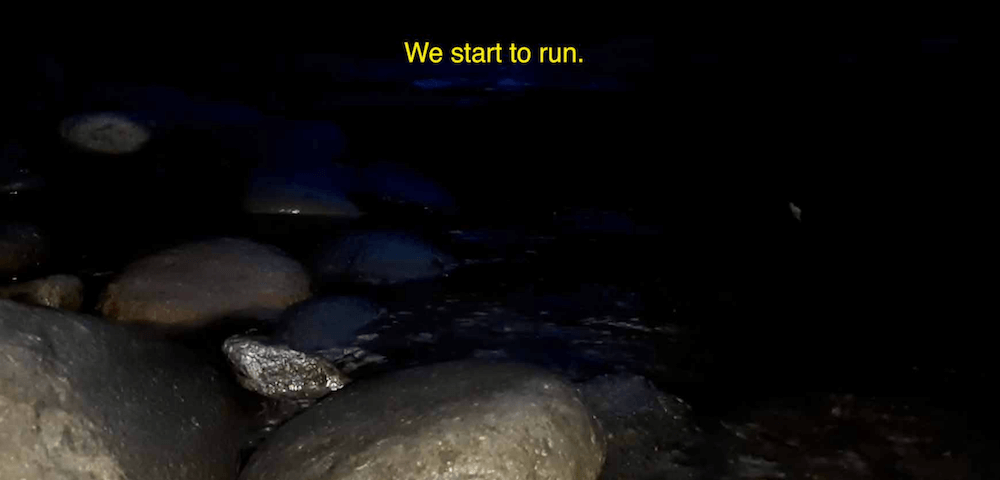
NIGHT RUN
dir. Kersti Jan Werdal, 2023
4 mins. United States.
Memory of a night.
INNEY PRAKASH, a film curator and critic originally from Detroit, Michigan, is the founder and director of Prismatic Ground, an avant-garde film festival in New York City. His previous roles include Co-Director of Programming at Maysles Documentary Center and Curatorial Lead for the San Diego Asian Film Festival. Prakash has also contributed to festivals like Sundance and SXSW. His writings have appeared in Filmmaker Magazine, Film Comment, and several other platforms, reflecting his deep engagement with the film community. He is presently the Film Curator at Asia Society NYC.
LUCY KERR is a filmmaker and film director, movement director, choreographer, and educator based in New York. Kerr is passionate about working with bodies and bodies in space in ways that are formal, expressive, experimental, and experiential. In addition to creating avant-garde performances for theaters, galleries, and public spaces, Kerr works as a choreographer and movement director for fashion, music videos, and film, including clients such as Miu Miu, Nike, and Ian Sweet. Kerr has received commissions from LA Dance Project and The Center for Performance Research. Her performance work has been presented by Francois Ghebaly Gallery, The Brooklyn Museum, La Mama Galeria, LEIMAY, INSITU Festival, SFMoMA, Triskelion Arts, The Chimney NYC, and others. Kerr has facilitated workshops on performance and time based practices through organizations such as UnionDocs, LA Dance Project, CalArts, and NAVEL. Kerr’s debut feature film, FAMILY PORTRAIT, premiered at the Locarno Film Festival in 2023 and won the Boccalinio d’Oro for Best Director from the Swiss Critics, who stated that Kerr’s “choreographic mis en scene probes space, time, and the souls of her protagonists with a poetic touch, lightness, and precision.”
KERSTI JAN WERDAL is a filmmaker whose work centers around collective memory, hidden cultural truths, and place. Demanding the audience take a direct role while viewing, she typically situates specific plot-points opaque, and prefers to pivot away from the expository. Her films focus on off-screen sound and framing of the subject to tell a story, while often working within a structuralist form. Her films have shown at IDFA, Camden International Film Festival, Prismatic Ground, Pesaro International Festival, Festival Ecrã, Blum & Poe, Galerie Allen, Anthology Film Archives, Northwest Film Forum, and Metrograph.
Werdal has also collaborated as Editor on films made by other Directors. These works have screened at MoMA, Dokufest International, Visions du Reel, Metrograph, and Ji.hlava. She received her BFA from Columbia University in Sociocultural Anthropology and Art History, as well as an MFA in Film/Video from California Institute of the Arts.
Presently, she is in pre-production for her next film, to be shot in Italy this Summer.
LUMINOUS PASSAGE: An Evening with Ryan Marino
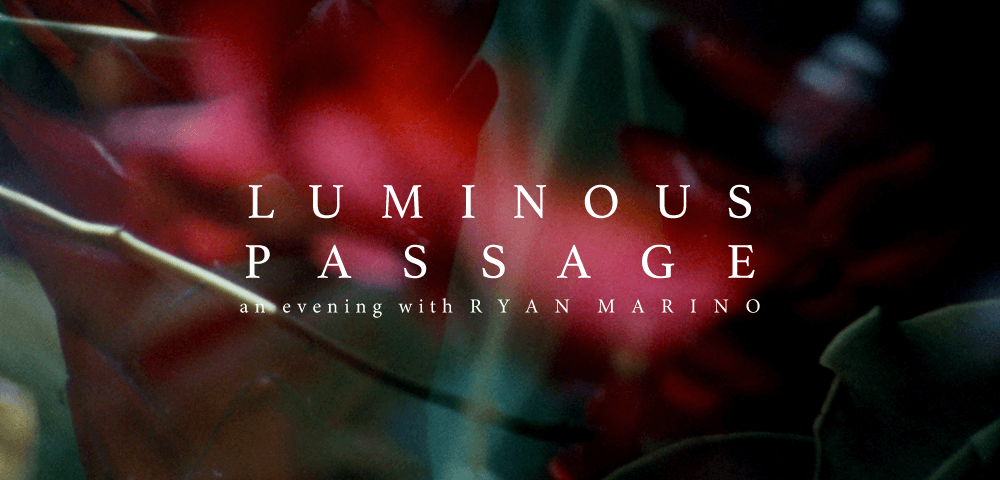
SATURDAY, APRIL 26 – 7:30PM with filmmaker in person for Q+A
ONE NIGHT ONLY!
This April, interdisciplinary artist and longtime friend of Spectacle Ryan Marino joins us for a one night presentation of short films spanning nearly two decades – the first time Marino’s films have been collected in one program. Shot and projected on 16mm film, Marino’s work interrogates the interplay of light and dark, texture and negative space, happenstance and design; he follows in the tradition of avant-garde filmmakers like Nathaniel Dorsky and Rose Lowder, while his practice as a noise artist and recordist of wild field audio informs the relationship between documentation and fragmentation (which, in turn, these highly impressionistic works make into cinema.)
ALL THAT REMAINS
2008. 8 mins. 16mm.
A study in the light, textures and ghosts that make up the abandoned.
THE LUMINOUS PASSAGE
2010. 6 mins. 16mm.
A meditation on the passage of time and light, an evocation of the season of autumn.
A DISTANT HORIZON
2012. 6 mins. 16mm.
Remote landscapes marred by time unfold in a natural show of light and shadow play.
OLD GROWTH
2014. 8 mins. 16mm.
Amid the arboreal giants and temperate organisms of a primeval rain forest lurks an elusive luminous force.
AURA OF UNCERTAINTY
2016. 6 mins. 16mm.
Ominous passages of time and light provide a fleeting glimpse into the unknown.
DEPTHS
2020. 5 mins. 16mm.
Traversing the darkness and emerging into the light.
RADIANT FORMS
2022. 7 mins. 16mm.
Luminous forms merging in time.
HALF LIGHT
2023. 10 mins. 16mm.
Shot over a period of three years in a single interior space, this film explores sensory perception through the textural surface of expired film stock, light and layered images. Ephemeral moments meld into voids of grain.
THE VISIBLE MATERIAL
2024. 8 mins. 16mm.
Through means of rephotography and refracted projection, the movements and luminescent surfaces of Berlin’s Alexanderplatz are transformed into vibrant fields of moving color.
RYAN MARINO is a New York–based artist working with film and sound. His 16mm films have screened at film festivals and venues worldwide, including: Anthology Film Archives, Crossroads, New York Film Festival, Milwaukee Underground Film Festival, Uplink, RPM Festival, San Francisco International Film Festival, WNDX Festival of the Moving Image, Fracto Experimental Film Encounter, Transient Visions, Celluloidra Revolverrel, Ribalta Experimental Film Festival, Spectacle Theater, Engauge Experimental Film Festival and the Pacific Film Archive.
FILMMUSEUM BOISE PRESENTS: SALLY & JESS
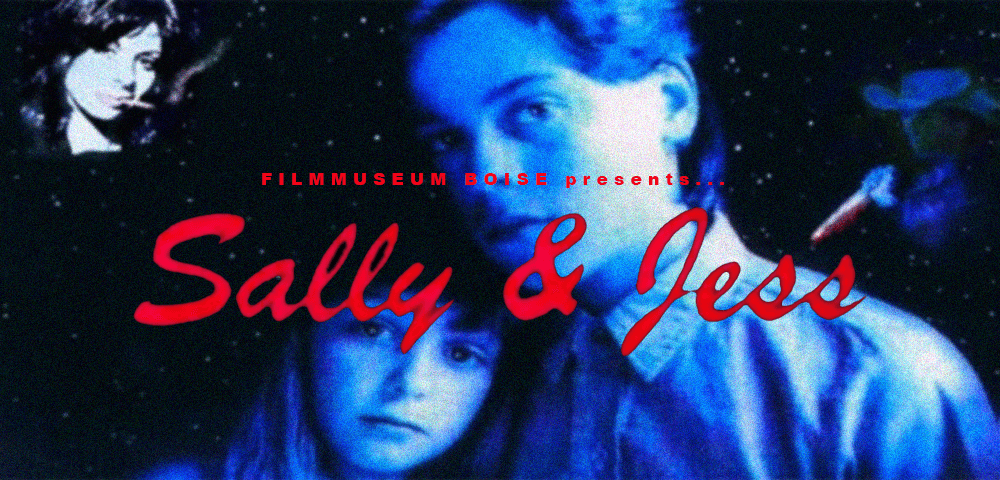
SALLY & JESS
dir. John Wintergate, 1989
United States. 94 mins.
In English.
SATURDAY, APRIL 12 – 5pm – ONE NIGHT ONLY!
Spectacle is thrilled to collaborate with our friends from Filmmuseum Boise on a rare screening of SALLY & JESS, John Wintergate’s little-seen (and Idaho-shot) followup to the infamous BOARDINGHOUSE.
A “family film” in content and production, SALLY & JESS is John Wintergate’s unreleased follow-up to BOARDINGHOUSE, his noted 1982 SOV feature. Filmed in 1989 in McCall, Idaho, the film follows the titular brother and sister (played by Wintergate’s children, Shanti and Kodey) as they navigate the fallout of their parents’ (Wintergate and his wife, Kalassu) deaths, fleeing from foster care while a child murderer operates in the area.
Less a horror film than an adventure film with some peril (a specialty of the Mouse House once upon a time) the film is at its best when it’s focused on the Wintergate family spending time together and with friends. It uses the big skies and nearby swaths of forest to make the movie feel larger than its budget. The close knit nature of the small town, pop. 2000, where it was made manifests on screen as actual community resources assemble to aid in the fictional search for the runaways.
SALLY & JESS is a snapshot of a time before the 90s boom turned “indie film” into a cottage industry where you follow every book and manual, trying your best to pass for legitimate studio product, hoping to be rise within reach of the brass ring and cash in on the promise of fame and acclaim, when making an independent movie could simply be a novelty, made for the hell of it, something you show to your friends, and then years later reminisce, “remember when they made that movie in town? What a time that was.”
“Idaho sees a lot of filmmaking among the locals, but not a lot of filmgoing. Until recently, the only repertory screenings run would be the yearly reruns of the usual franchise titles. Filmmuseum Boise (and its earlier iterations) was started to fill the void in film programming. If the only way to view a film I would see in NYC is to run it myself, then I guess that’s what I gotta do. I am very pleased to flip things around in this case and bring an Idaho film to the city.” – Alex Hansen, founder + curator of Filmmuseum Boise
ON EARTH

ON EARTH
dir. Noa Ryan, 2024
35 mins. United States.
In English.
SATURDAY, APRIL 26 – 5PM followed by Q+A with Noa Ryan
ONE SCREENING ONLY!
This April, longtime friend of the theater Noa Ryan – who helped organize Spectacle’s 2019 tribute to Suzan Pitt – will join us for a work-in-progress presentation of their new film ON EARTH.
ON EARTH is a collaged conversation around the ruins of the Sutro Baths, a massive San Francisco bathing complex turned to dust inside of a century. The site of the baths is the nexus, but the conversation wanders.
Formally, the project is a collage of site studies, interviews, archival and contemporary media, and newly recorded super 8 and animation. It aims to trace genealogies without enclosing them, and to lay out a broad web of contexts for thinking about material histories, time, power, and nature.
ON EARTH addresses ancient history, silver mining and American empire, a pool cleaning startup, the arrow of time, the origins of cinema, speculation and land, property and enclosure, Millennium Tower, mass media and William Randolph Hearst’s Castle, technics and civilization, gilded age populism, Ramaytush Ohlone cosmology, recursive evolution, arson and the ever-living fire, if rocks could talk, the giant camera and its cosmic eye, the ocean, the mysteries, Ecclesiastes 3:1-8.
NOA RYAN is an archivist and filmmaker based in New York.

STOLL/REBELLA/STOLL
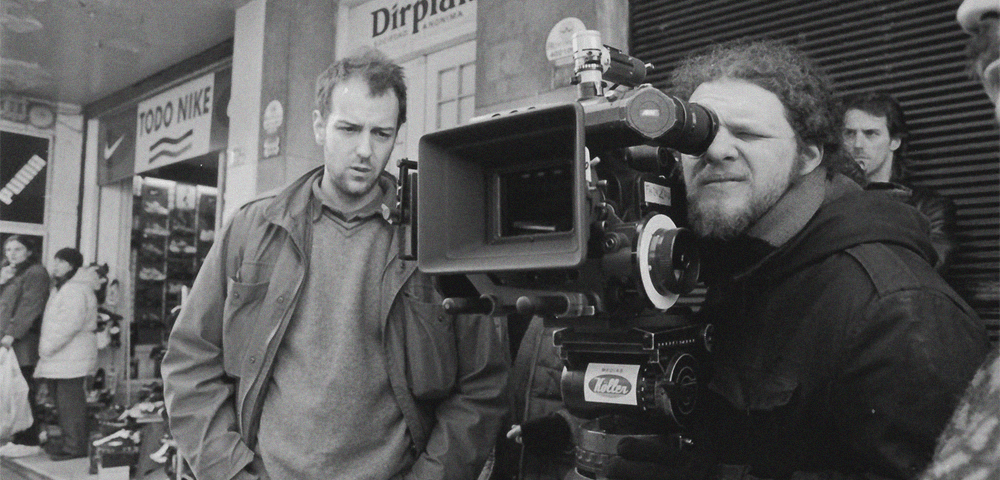
2024 marked two decades since the Cannes debut of WHISKY, a drolly melancholic comedy from Uruguayan writer-director duo Pablo Stoll and Juan Pablo Rebella. WHISKY combined a kind of shit-eating Beckettian existentialism with rigorously controlled filmmaking; while the movie took home an Un Certain Regard prize and was widely heralded as an important work of new Latin American cinema, Rebella sadly took his own life in 2006, at the untimely age of 32.
This spring, Spectacle is proud to host anniversary screenings of WHISKY as well as the earlier Stoll/Rebella comedy 25 WATTS (2001), and to spotlight two features Stoll made after his friend’s death. These films testify to a brilliant and idiosyncratic collaboration (and thus a great loss for cinema), as well as Stoll’s continued importance as an artist equally enamored of formal experimentation, film history, and the eternal comedy of being human.
Special thanks to Cinema Tropical, Lucía Malandro, Jesse Trussell, and Pablo Stoll.
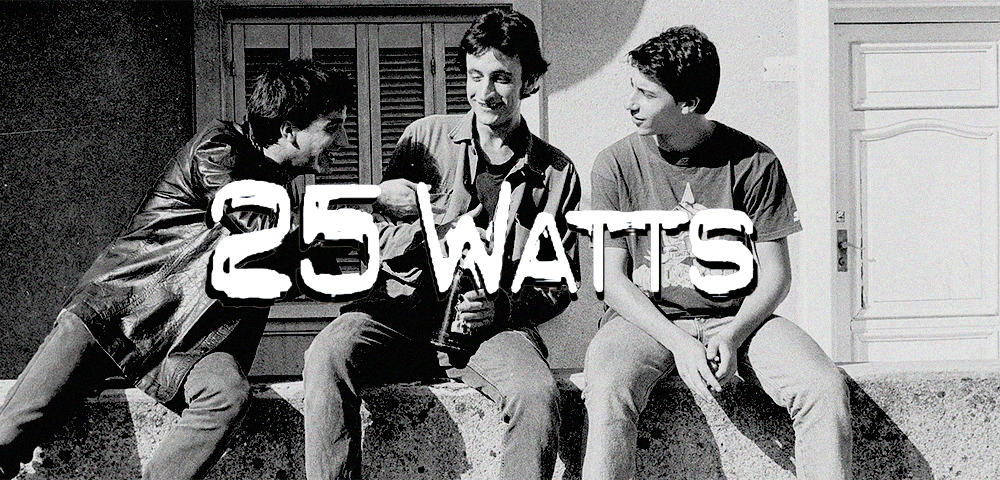
25 WATTS
dir. Pablo Stoll and Juan Pablo Rebella, 2001
Uruguay. 93 mins.
In Spanish with English subtitles.
TUESDAY, APRIL 8 – 7:30 PM
SATURDAY, APRIL 19 – 7:30 PM
TUESDAY, APRIL 22 – 10 PM
FRIDAY, APRIL 25 – 7:30 PM followed by remote Q+A with Pablo Stoll
(This event is $10.)
Un barrio. Tres pibes. Veinticuatro horas.
Stoll and Rebella’s breakout debut details the lives (or lack thereof) of a trio of teenage friends kicking rocks over a hungover and dissatisfied 24 hours in Montevideo.
Shot in arresting, high-contrast black and white film, 25 WATTS drew inevitable comparisons with CLERKS and LA HAINE. While it is often austere, Stoll and Rebella take conspicuous pleasure in brief digressions in style, like when the camera adopts the perspective of a spinning vinyl record or an 11th-hour flashback disrupts the sleepy narrative pace. Almost a quarter century later, 25 WATTS feels like a playful, even punkish antidote to the taxidermied mise-en-scene that came to dominate twee arthouse cinema in the 2000s.
While 25 WATTS was the most recognized film in Uruguayan history at the time of its festival run, the filmmakers were uncomfortable at the idea of representing a national cinema. Nevertheless, this is a precise portrait of a culture that doesn’t know quite what to do with its young men, resulting in a turn-of-the-millennium slacker comedy par excellence (and anticipating the even more bone-dry WHISKY).
“A very charming and funny derivation of the Jarmusch manner from Uruguay… The basic focus is on three hungover slackers one busy Saturday in Montevideo. I served on the jury for the Buenos Aires Festival of Independent Film that awarded its acting prize to the three likable leads (Daniel Hendler, Jorge Temponi, Alfonso Tort), and the film won many well-deserved festival prizes elsewhere (including a couple in Rotterdam.)”— Jonathan Rosenbaum
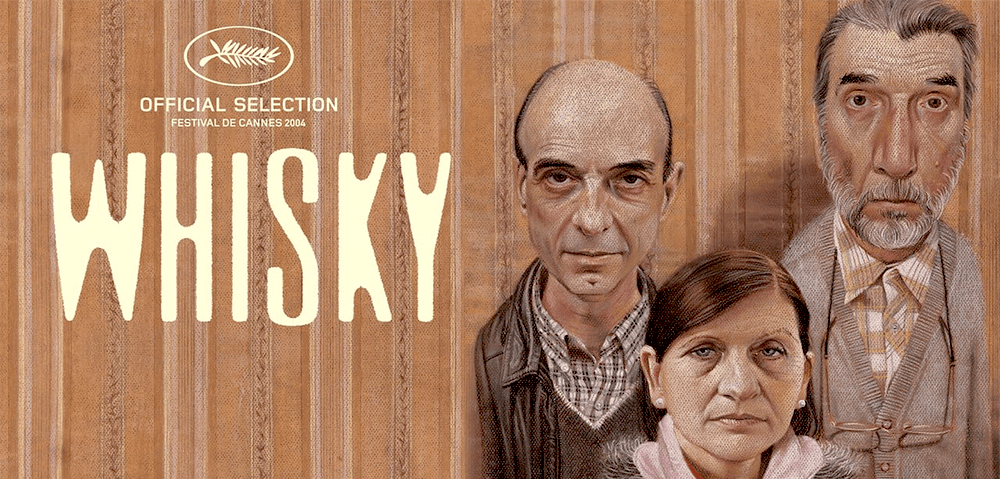
WHISKY
dir. Pablo Stoll and Juan Pablo Rebella, 2004
Uruguay. 94 mins.
In Spanish with English subtitles.
THURSDAY, APRIL 10 – 7:30 PM
THURSDAY, APRIL 17 – 7:30 PM
TUESDAY, APRIL 22 – 7:30 PM followed by remote Q+A with Pablo Stoll
(This event is $10.)
MONDAY, APRIL 28 – 10 PM
Stoll and Rebella did not return to the disaffected teenage milieu of 25 WATTS for their second feature, but instead pivoted into a tale of existential crisis past the point of midlife. 60-year-old Jacobo (Andrés Pazos) operates a sock factory in Montevideo. When his more successful older brother Herman (Jorge Belani) surprises him with a visit after years of estrangement, Jacobo can’t face the idea of him walking in on a life that is blatantly unsatisfying and a factory on the verge of shutting down. So Jacobo asks his employee Marta (Mirella Pascual) to pose as his wife for the weekend. A love triangle ensues.
Seen by many as the duo’s masterpiece, WHISKY is a beyond-deadpan family comedy of matters. It’s a barbed rumination on middle-class success that revels in negative emotional space. This even extends to the title, a reference to how Uruguayans say “Whisky!” the same way Americans say “Cheese!” when getting their pictures taken.
“Repeated near-Bressonian sequences track Jacobo as he opens the plant: shots of hands flipping switches and machines whirring to life establish a cinematic rhythm that propels the film through its first half… [WHISKY]’s neat bifurcation suggests a pair of filmmakers gradually becoming fascinated with larger questions of narrative structure.” — Jeff Reichert, Reverse Shot
“The story of two souls seemingly stuck in neutral (with a third in relentless drive), the film is a model of both fiscal and narrative economy, and the kind of work—gleaned from the mysteries of consciousness, telling quotidian details and a sense of aesthetic proportion—that is too often missing from American independent cinema.” — Manohla Dargis, The New York Times
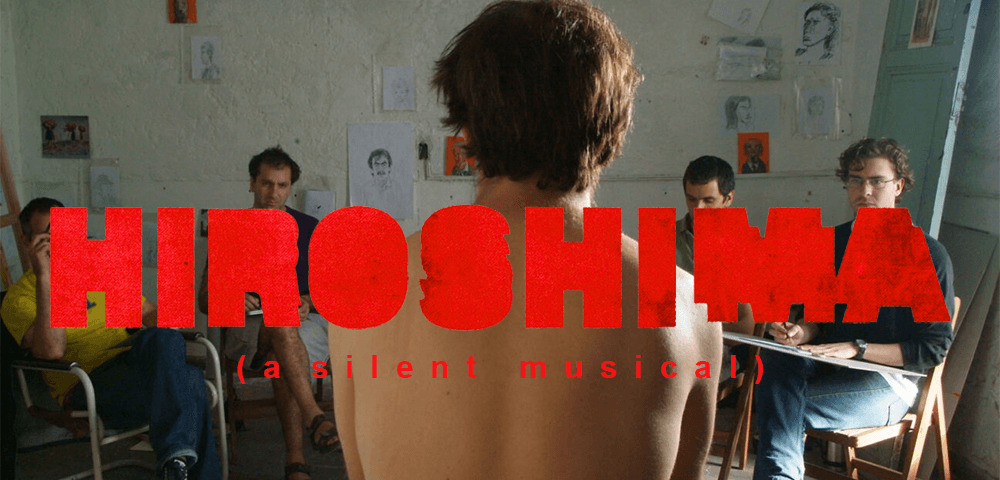
HIROSHIMA
dir. Pablo Stoll, 2009
Uruguay. 80 mins.
Silent with English intertitles.
WEDNESDAY, APRIL 2 – 7:30 PM
MONDAY, APRIL 7 – 7:30 PM
SATURDAY, APRIL 12 – 7:30 PM
FRIDAY, APRIL 18 – 10 PM
Like 25 WATTS, Stoll’s first solo credit as director takes place over the course of one 24-hour period. But it would be too easy to call HIROSHIMA a synthesis of that film’s slacker vibes and WHISKY’s mimetic tragicomedy, anchored by the filmmaker casting his real-life family—chiefly his brother Juan Andres Stoll as the protagonist, also named Juan. This Juan struggles to communicate with the people around him; Stoll subtracts human (and animal!) voices from the film’s equation, making HIROSHIMA a “silent musical.” The only audio is the music piped in through Juan’s discman as he makes his way from morning (working a joyless bakery gig) to night, where performing with his punk band The Genuflexes may offer an outlet.
While HIROSIHIMA does not explicitly reference Rebella’s death, its funereal atmosphere and trance state will resonate with anyone dumbstruck by grief. But Stoll’s film is also a game (and often hilarious) homage to pre-verbal cinema, using intertitles for spoken dialogue. This approach reveals a cinephilic love of experimentation wholly consistent with the earlier films, despite the almost neorealist trappings of the long takes and forlorn vistas, all building toward a payoff gag that must be seen to be believed.
“Actually nothing happens in this movie. But I was never bored throughout the screening. Makes me wonder…” — JvH48, IMDb
“…A wacky version of a certain kind of hybrid movie from cinema’s transition era from silence to sound, films in which sound was used expressively (even perversely) by the likes of Rene Clair and Alfred Hitchcock… We all see, a hundred times a week, examples of mainstream editing seamlessly, invisibly reinforcing the illusion of dialogue between characters, each of whom occupies his or her own close-up. By contrast, Stoll reminds us how dialogue was typically cut during the silent age, indistinguishable from visual force… HIROSHIMA is nothing less than trippy classicism.” — Tom Keough, The Seattle Times

THREE
dir. Pablo Stoll, 2012
Uruguay. 115 mins.
In Spanish with English subtitles.
TUESDAY, APRIL 1 – 7:30 PM
THURSDAY, APRIL 9 – 7:30 PM
THURSDAY, APRIL 17 – 10 PM
MONDAY, APRIL 21 – 7:30 PM
Another acerbic portrait of human folly and repression, THREE was expanded from a treatment Stoll and Rebella worked on together, another comic grotesquerie of family dysfunction. Humberto de Vargas stars as Rudolfo, a floundering 40-something dentist who attempts to reconnect with his alienated ex-wife Graciela (Sara Bessio) and teenage daughter Ana (Anaclara Ferreyra Palfy), who forms the film’s emotional center of gravity. Rudolfo is dissatisfied with his new marriage, Graciela is focused on her dying mother, and the void of attention from her parents leaves Ana to seek it in the wrong places.
THREE feels very much like a melancholic (and realistic) take on the quirky family dramedies that dominated the 2010s and 2020s, mostly drawn in brief, episodic scenes that gesture toward a bigger scope than is warranted by the material. The combined tension and lightness of touch that made WHISKY feel like watching bugs squirm under a microscope is here, but Stoll’s acute melancholy is impossible to miss, and the filmmaker again uses music (this time, punk and indie tracks from Uruguayan bands) to chart queasy emotional landscapes.
“This film screams ‘Uruguayan’ in so many ways, at least the stereotypes conveyed in previous films by the duo Rebella/Stoll and subsequent movies that followed their style in the Uruguayan Wave that began in the 2000’s. Being released in 2012, technologically speaking it looks like it was shot some ten years earlier: plenty of tube tv’s, white CRT monitors, VHS players, etc… A great soundtrack by local bands, usually very underappreciated in the spanish-speaking world, let alone outside of it. Loved the stylish 1990’s football jerseys from Defensor and other smaller sides from their local league and abroad.” — jaibeseret, Letterboxd
FLICK PIT
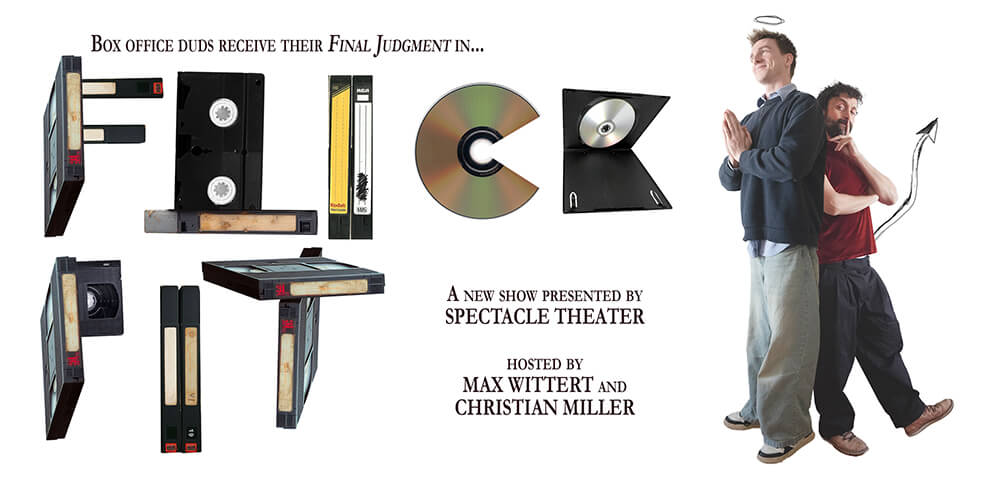
TUESDAY, APRIL 29 – 7 PM
Upon underperforming, Hollywood flubs are cast aside into a desolate corner of Hell, where they are meant to be forgotten. But who let the capitalists have the final say? Join Max Wittert and Christian Miller as they exhume these forgotten features and give them a second chance.
Max Wittert is a comedian and the host of the classic Spectacle series Get Real. Christian Miller is a comedian and the host of the annual Troll 2 Riff Show, which has been running for four years. This month, they will be joined by fellow comedians Rachel Coster, Sydnee Washington, Kendra Singh, Lukas Battle, and more
A FUGITIVE FROM THE PAST
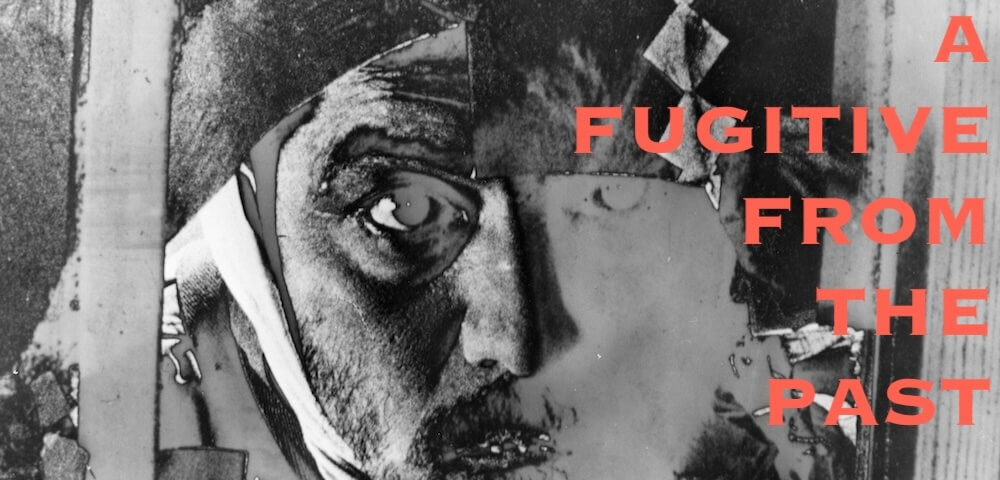
A FUGITIVE FROM THE PAST (飢餓海峡)
(STRAITS OF HUNGER)
Dir. Tomu Uchida, 1964.
Japan. 183 min.
In Japanese with English subtitles.
SATURDAY, April 5 – 5 PM
FRIDAY, April 11 – 10 PM
MONDAY, April 14 – 7:30 PM
THURSDAY, April 24 – 7:30 PM
Tsunejirō Uchida, nicknamed “Tom,” chose to spell his professional name as 内田吐夢, using kanji meaning “to spit out dreams”—an irresistible metaphor for a consummately fluent image-maker who worked across epochs and genres.
Destined to be rediscovered by Anglo-European audiences every other decade or so, Uchida began his career with triumphs such as the now-lost peasant epic Earth, Kinema Jumpo’s best film of 1939 and a romantic depiction of rural labor that was used to recruit settlers to the Japanese colonial possession of Manchuria. Uchida himself went to Manchuria in the late 1930s, intending to make propaganda films. The director’s flirtation with extreme nationalism climaxed in 1945, as Russian forces moved in. In accordance with the values of bushidô, the true believer head of the Manchurian Film Cooperative took poison and died in Uchida’s arms.
Uchida stayed in Manchuria for almost a decade more, never directing a film, but studying dialectics and working for a time in a coal mine. The films he made upon resuming his career in Japan in the 1950s express a chastened, revisionist take on the symbols and narratives of Japanese empire and tradition. Stories of outcasts and amour fou, in modes from jidai geki to crime saga to folktale to dramedy, they also jump across registers from pulpy naturalism to candy-colored theatrical artifice. Diverse to the point of self-obscuring in their range of subject matter and setting, his films are united by fleet cutting, muscular closeups, and dynamic widescreen blocking, charged with a unique intensity.
Perhaps the capstone of Uchida’s career and the great uncanonized epic of ’60s Japanese cinema, A Fugitive from the Past begins with a desperate home invasion in Hokkaido in 1947, on the same night as a notorious ferry disaster. Two ex-convicts are among the bodies that wash up on shore, but a third man escapes with the loot. A decade later, the discovery of another body reopens the case.
Shot on 16mm and blown up to 35mm, with periodic jolts from solarization and other photographic tricks, the film has the tawdry tabloid urgency of Kurosawa’s High and Low or The Bad Sleep Well, a melancholy undercurrent of ruinous obsession a la Zodiac, and an inquiry into guilt and reinvention that’s operatic in its scope.
ON THE HUNTING GROUND
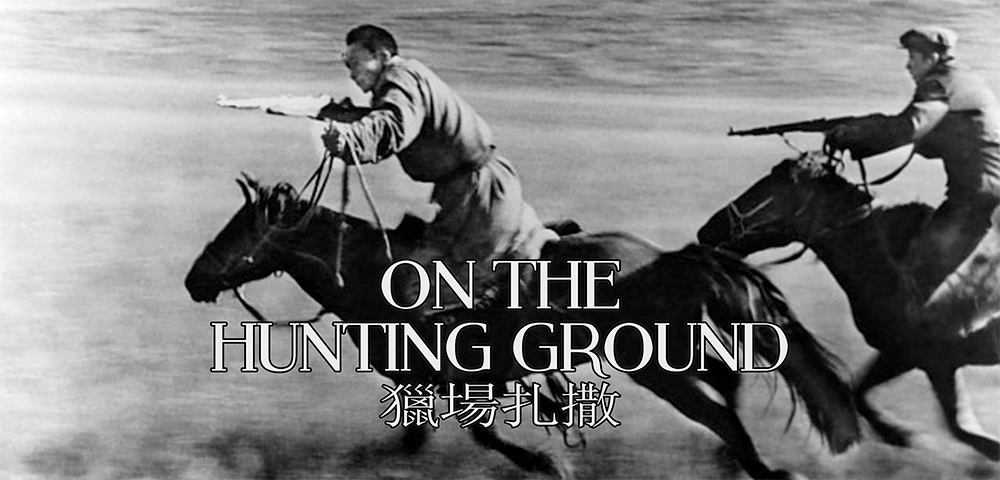
ON THE HUNTING GROUND (獵場扎撒)
dir. Tian Zhuangzhuang, 1984
Inner Mongolia. 76 min.
In Mongolic dialect & overdubbed Mandarin with English subtitles.
TUESDAY, APRIL 1 – 10 PM
THURSDAY, APRIL 10 – 10 PM
SUNDAY, APRIL 13 – 5 PM
MONDAY, APRIL 28 – 7:30 PM
Join us this April at Spectacle for rare screenings of Tian Zhuangzhuang’s groundbreaking and highly controversial early feature, ON THE HUNTING GROUND.
Like many of his “Fifth Generation” contemporaries, Tian came up during a politically and socially volatile period in Chinese history, characterized in part by a state-driven effort to foster an image of an ideal socialist citizenry via its cultural institutions. This effort included the propagation of “national minority films” throughout the 1950s and 60s that sought to portray inter-ethnic fraternity between the ethnic majority Han (comprising upwards of 90% of the country’s population) and minority groups such as Tibetans, Uyghurs, and Mongols. Often, though, these films pushed an assimilationist agenda that contrasted the “backwardness” of these communities’ traditional customs and practices with the modern benefits of life under Chinese Communist rule.
Decades after these films fell out of fashion, Tian Zhuangzhuang revitalized the concept with two features set roughly within the parameters of the genre, albeit with a radically different approach. The first, ON THE HUNTING GROUND, was filmed in China’s Inner Mongolia Autonomous Region and features a cast of native, non-professional actors. Ostensibly the film is about a local hunter who is ostracized from his community for violating a generations-old hunting code, but what plot and dialogue there is is sparse. Instead Tian approaches the work as part-minimalist visual experiment and part-ethnography, documenting the relationship between the Mongol peoples, their culture, and their land, irrespective of a state agenda that would seek to reconfigure the region’s physical and social environments for their own ends.
The film was ultimately met with a wave of controversy prior to its release, condemned by state censors and criticized heavily by the Chinese government and cultural traditionalists, and arguably contributing to his eventual blacklisting in 1994. Few cinemas within the country dared to screen the film publicly (supposedly only four prints of it were ever sold), however the work was championed by critics and filmmakers abroad, launching Tian to a level of international prominence contrasting with his perception at home.
“Tian’s work marks a radical break with the aesthetics of earlier generations of Chinese filmmakers. Rather than placing minority peoples within a narrative of liberation accessible to the average Han Chinese viewer, [ON THE HUNTING GROUND] emphasizes the relationship between the land and the people. Long shots and long takes dominate; the landscape overpowers any identification with individual characters; dialogue, which is minimal, goes untranslated; rituals and social relationships remain unexplained. The Mongolian steppes— exotic, violent, harsh, and picturesque— become the visual embodiment of an unfathomable part of the Chinese nation, a marker of the limits of an ethnic identity.
These films are not about the plight of a downtrodden “minority” (although the people presented in Tian’s films are indeed poor and sometimes desperate), rather these are films about the liminality of Chinese ethnicity and, by implication, political authority, within its own borders.”
WINTER BEYOND WINTER: The Films of Jonathan Schwartz

FRIDAY, APRIL 11 – 7:30 PM
SUNDAY, APRIL 13 – 7:30 PM
It seems to me then as if all the moments of our life occupy the same space as if future events already existed and were only waiting for us to find our way to them at last, just as when we have accepted an invitation we duly arrive in a certain house at a given time. — W.G. Sebald
Before his untimely death at 45, Jonathan Schwartz built a formidable body of work as one of the most promising and accomplished experimental filmmakers of the 21st century. A professor at the School of the Museum of Fine Arts in Boston and Keene State College in New Hampshire, his 16mm works are fragments of fleeting spectral moments, navigating landscapes as varied as the glaciers of Iceland and a canopy of trees near his Vermont home with the same sense of wonder. Combining the ephemerality of childlike awe with grief and mortality, his work often parallels that of authors like W.G. Sebald in its attempts to wrestle with the elusiveness of memory through found objects, readings, and his elliptical imagery, creating a form that is wholly new and enthralling.
Spectacle is proud to present the first program of Schwartz’s work to screen in NYC since 2019, a rare opportunity to view much of it as intended, on 16mm in an intimate environment. The event will be introduced by Jonathan’s close friends Rebekah Rutkoff and Emily Drury. Rutkoff is a NYC-based writer. She is the author of The Irresponsible Magician: Essays and Fictions and Double Vision: The Cinema of Robert Beavers. Drury is a landscape designer based in Harrisville, New Hampshire.
A LEAF IS THE SEA IS A THEATER
Dir. Jonathan Schwartz, 2017.
United States. 17 mins, 16mm to digital.
You cannot describe a house on fire until the actual event takes place. Perhaps there will be no fire. Either you’ll have to deny the description as a fiction, or burn the house in accordance with the script. — Dziga Vertov
THE CRACK-UP
Dir. Jonathan Schwartz, 2017.
United States. 17 mins, 16mm to digital.
“… an excursion through fear, near collapse, and transformation that takes its name from F. Scott Fitzgerald’s 1936 autobiographical essay. Reflecting on life’s ‘process of breaking down,’ it is both extremely personal and also relevant to the difficult times we live in. With sublime 16mm footage of glaciers, monumental snow-covered landscapes, and an icy, roiling sea, The Crack-Up alternates strident sounds and brash rhythms and gestures of the camera with moments of arresting fragility and grace. Danger, death, the unexpected chaos, and destruction of life are all evoked with almost no human presence in the image. The sound of wind, rain, the cracking of frozen earth occasionally gives way to two voices: a female voice reciting from Fitzgerald’s text and a male voice struggling to use language at all. Schwartz’s film seems to take as its challenge Fitzgerald’s admonition to simultaneously ‘see that things are hopeless and yet be determined to make them otherwise.'” — Irina Leimbacher
IF THE WAR CONTINUES
Dir. Jonathan Schwartz, 2012.
United States. 5 mins, 16mm.
“Jumpers move from right to left like the carriage return of a typewriter, while the landscape and rays of sunlight thrust lines in the opposite direction. The somehow nostalgic, slowed-down editing of the images contrasts with the preeminence of pounding sound, accompanied by a degraded, almost unintelligible narration from a cassette tape about the life and work of the German writer. As Schwartz points out, the soundtrack shares some similarities with Popul Vuh’s electronic score at the opening of Werner Herzog’s The Great Ecstasy of the Sculptor Steiner (1974). This sound has the quality of a forgotten mantra or a robotic plea. The repeated motion swerves towards Nietzsche’s idea of eternal return: the temptation and fascination of going back to the origins by jumping away.” — Monica Saviron
FOR A WINTER
Dir. Jonathan Schwartz, 2007.
United States. 5 mins, 16mm.
“The camera remains static to capture the accelerated movements, shot frame-by-frame, of ice skaters on a sunny winter morning. They are not portrayed as living things—they don’t have the ability to speak, and they look like robots from another planet whose language is the sound of sharp razors on thick ice. They may very well be ghosts, and less alive than the figures of nature in an old book.” — Monica Saviron
WINTER BEYOND WINTER
Dir. Jonathan Schwartz, 2016.
United States. 11 mins, 16mm.
“Winter Beyond Winter confirms his gift for lyrically transposing what’s close at hand, in this case drawing a reverie of fatherhood from the short, sharp days of New England winter. The camera moves from laden trees to dazzled earth while on the soundtrack a boy reads. From here we follow an older man carrying skates and a boom mic into the woods. He turns a few elegant arcs around a small pond, the camera watching from the side before shaking off its melancholy and taking to the ice. One skater holds the image, the other the sound; the shot is their union.” — Max Goldberg
NEW YEAR SUN
Dir. Jonathan Schwartz, 2010.
United States. 3 mins, 16mm.
“… Schwartz approaches light traveling through water in all its forms. His macro lens strives to get closer to the essence, to the transparency of things, and yet, the tenebrous and doomed cry of a church’s bell, and the ascending, unstoppable pitch that accompany the images end up close to the sound of a derailed train—and the unfocused, unclear vision that comes with it.” — Monica Saviron
